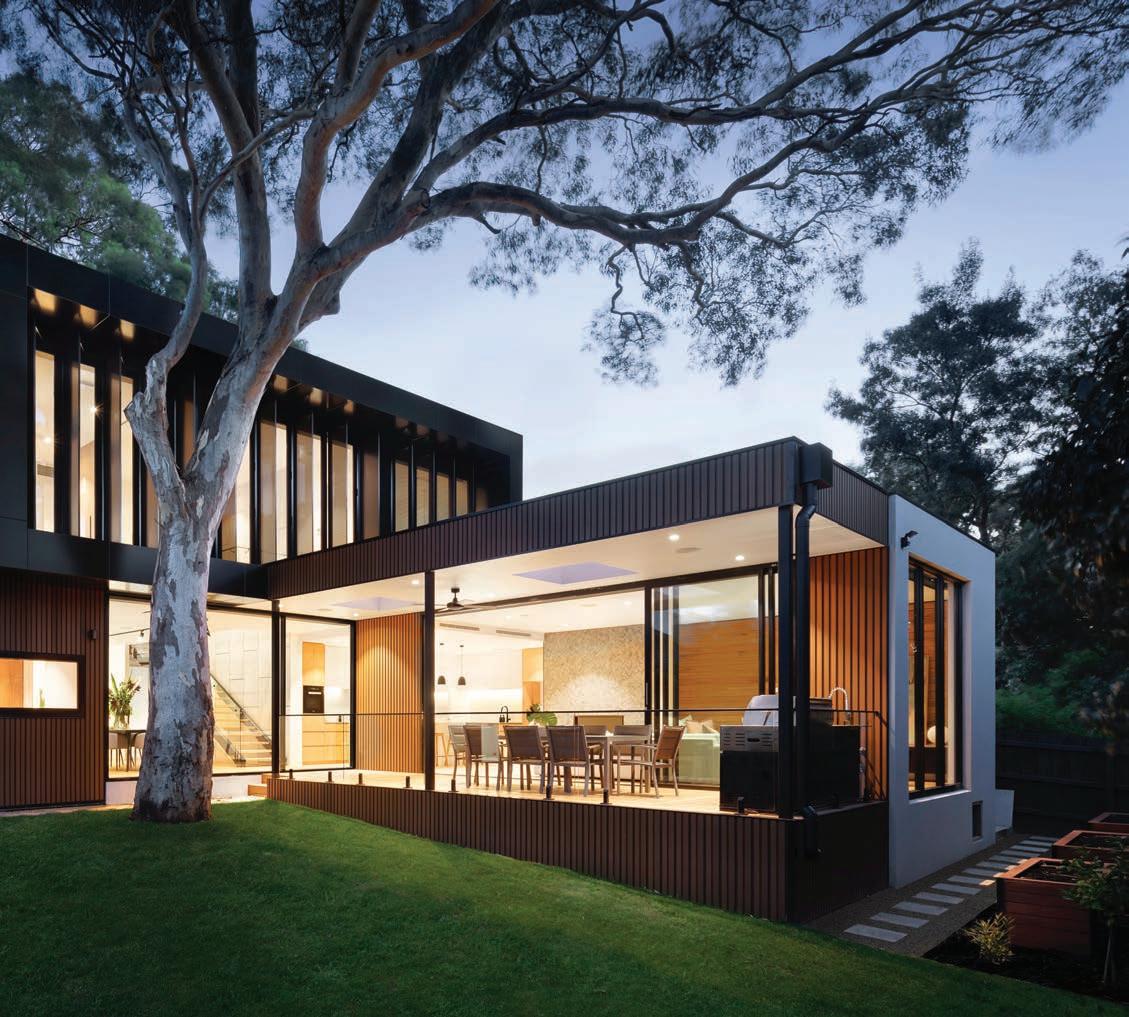
7 minute read
Market Misconceptions DEBUNKED
Conflicting economic signals. Sensational media headlines. If you’re confused about how to read the tea leaves of the latest real estate data, you’re not alone. Here are three of the most common misconceptions about pricing, inventory, and sales numbers, and why reality may be better than perception for the luxury home market this year.
Misconception One
“Prices are falling so my home is worth significantly less today than it was last year.”
As buyers adjusted to higher borrowing rates, economic uncertainty in 2022 and declining numbers of sales, much talk has centered around the idea that prices would eventually start to fall too.
In comparing the median sold price for luxury homes across 125 markets from December 2021 to December 2022, the prices actually shot up by 106.5%! There has been a small price correction of 3.5% when comparing December 2022 against June 2022, which recorded the highest median sold price during 2022.
During this time period, some markets reported a 10% to 12% price decrease while others reported price growth in double digits. With numbers like that, how do you determine if your property’s value is really falling or not?

The Reality
Using a single parameter like median sold prices to prove property value declines is not telling the whole story, especially if you are comparing the volatile 12 months of 2022 against 2021. You need to understand the influence of inventory, especially new inventory, as well as the change in demand.
How 2022 Demand Changes Impacted Price
One of the key parameters that must be factored into your understanding of price drops in a changing market is how a shift in demand can distort the perception of median price.
Part of what is driving down the median sales price currently is that there are now more sales for lower-priced luxury homes. Reasons for this include higher interest rates eating into buyers’ affordability, the resurgence of cities where properties tend to be smaller, people don’t need as much space as they did during the height of the pandemic, and rising demand for multiple homes, which tend to be smaller. SP/LP% is a far more telling metric.
Changes In Demand
LAST YEAR VS.
Luxury mansions and estates with higher price tags were in demand
Buyers were paying over asking price
A severe lack of inventory was driving up home prices
Prices were less of a factor because interest rates were low
This Year
Homes with smaller footprints (and price tags) are in demand wary of over-
Buyers are warier of overextending themselves
Inventory is still low, but there is less new inventory entering the market
Prices are more important because interest rates are substantially higher
Inside the Numbers
We reviewed the data for single-family homes in just four very different U.S. luxury home markets to demonstrate. When you look at overall luxury home prices from the first quarter to the fourth quarter of 2022 in some of these locations, it looks like prices have decreased dramatically.
Take Maui as an example. Prices for luxury homes dropped from about $4.5 million in the first quarter to $3.9 million in the last quarter. When you look at the SP/LP%, it was at 89%, suggesting that price negotiations were happening. However, when you look at home prices in the $1-2 million and $2-3 million categories, prices have stayed relatively stable and even notched up a little in the $2-3 million range. The SP/LP% was close to 100% for the $1-2 million range, and 102.2% for the $2-3 million range, which shows strength in these price segments.
Bottom Line
To get a more accurate picture of the value of properties in your market, it is much more helpful to compare home sales by price band rather than using the whole market, and not be influenced by properties that have been on the market a long time and probably would have been overpriced even in the seller’s market of 2021!
Misconception Two
“Inventory levels are rising; therefore, I will be able to find my dream home at the price I want.”
Buyers have recently been encouraged by media narratives that inventory levels were finally up in 2022. But when they went house shopping and still struggled to find properties that met their criteria, they were rightly confounded. If inventory was increasing, then why couldn’t they find the home they wanted?
The Reality
From May 2020 through May 2022, the level of luxury home inventory dropped month over month, on average. By May 2022, there was an upswing and buyers began to see relief in what was a very dark tunnel of “chasing the market.” But this upswing in inventory, together with the Federal Reserve announcing its plan to continue increasing interest rates, was countered by a dearth of sales. After which, new inventory entering the market declined in the last six months of 2022 compared to the second quarter of 2022 – likely due to seller hesitancy. Inventory levels did seemingly continue to rise, so what was the reason behind this disparity?
Why a Desirable Home is Still Hard to Find
Our Opportunity Index stats show that active listings rose in 112 markets out of 125, but 100 markets saw a comparative decrease in the number of new listings from the last four months of 2022 compared to the first eight months.
There are a few reasons for this anomaly. First, supply levels increased because inventory stayed on the market and stale inventory accumulated. The inventory that remained on the market did not meet the criteria of buyers, for whatever reason, whether it be price, home condition or quality, size, location, or all of the above.
This was compounded by sellers who were not willing to budge on price and let their listings languish on the market. As we can see from the chart in July, new sellers started to hesitate, as they feared higher interest rates or the prospect of not being able to find a replacement property. This, in turn, created a lack of new inventory. The self-inflicted cycle continued.
Properties that did come onto the market, were priced correctly, and checked all of the desirability boxes (such as move-in ready, amenities, privacy, and views), still sold in record times and often, for full asking price.
Inventory Levels 2022
Inside the Numbers
Several markets show these conflicting dynamics at play when we compare the last four months of 2022 against the first eight months of 2022. In Central Connecticut, active listings only increased by 17.6% yet new inventory decreased by more than 24%, which resulted in an SP/ LP% of just over 100%, suggesting that sellers here were often achieving their price and even a little above it. More dramatically, Portland recorded a nearly 47% increase in active listings, but a 23% decrease in new inventory, resulting in an average 99.2 SP/LP%.
Bottom Line
To get a more accurate picture of the opportunities created by rising or falling inventory levels and improve your standing during price negotiations, it is important to understand the general makeup of available inventory in your particular price point in your local market area.

Misconception Three
“Declining sales are a harbinger of a housing market crash.”

While it’s true that sales in the final quarter of 2022 were down compared to 2021, you have to remember that 2021 was also one of the hottest real estate markets on record. Sales also only show one angle of a much more complex data view.
The Reality
It takes more than just declining sales to make a real estate crash. More likely, slowing sales are likely a symptom of a housing market that’s coming off of a two-year pandemic-influenced buying high and settling into a pace that’s more in line with historical norms as we can see when comparing sales in 2019 vs 2022.
Other economic factors, too, would likely need to be present, such as high unemployment. So far, the 2023 jobs market is off to a strong start, posting its biggest gain in January since July 2022.6 Mortgage rates have also started to come down, which could spur more activity in the housing market just in time for the normally busy spring buying season.
Number of Sales
Median Sold Price
Sales by Volume
65,635 $1,490,000 $106,085,672,101
63,257 $2,090,000 $143,465,816,034
Difference
Crash or Correction?
Another “c” word may be a more apt description for the current real estate landscape: Correction.
Buyers are in the process of adjusting to a new reality, where mortgage rates are roughly double what they were in 2020 and 2021 when rates plummeted below 3%. 7 Historically speaking, a 6% rate is still low, as anyone who purchased a home during the 1980s and ’90s will tell you.8 But for much of the last decade, the reference point for mortgage rates has hovered around 4%. So when rates jumped to 7% in October 2022, it was a shock to the system. Understandably, wealthy individuals took a breather to reassess their homebuying plans.
Eventually, affluent buyers (and sellers too, if they are letting go of a lower rate on their current home) will adapt to a higher reference point, as they always do. Some experts even expect millennials – now the nation’s largest living adult generation – to keep demand steady as they build up their wealth portfolios and age into their prime homebuying years.

Terms like “down market” and “buyer’s market” tend to get conflated during housing market corrections, but they are not the same thing. It’s not clear that either description accurately describes the 2023 luxury residential landscape. Take, for example, the question of whether we are in a buyer’s market. It largely depends on the unique supply and demand of a local area. The market as of December 2022 saw a huge swing in both directions with 58 of the 125 markets researched registering as seller markets, 26 were balanced, and 45 were favorable to buyers.
Inside the Numbers
Take Denver, Seattle, Boston, and East Bay in Northern California, for example. Conditions in these markets for single-family homes generally still favor sellers right now. Meanwhile, in places like Miami, Park City, Maui, and Reno (markets that experienced major buying booms during the pandemic), conditions are friendlier to buyers. But even then, that’s not the entire picture, as we have seen the pendulum swing in opposite directions over as little as a single month.
What is more likely happening now in many locations across the country is an equalizing for both buyers and sellers. As Danielle Hale, Realtor.com ® Chief Economist noted: “The 2023 housing market could become a ‘nobody’s market,’ not friendly to buyers nor to sellers.” 9

Bottom Line
For the level of sales to increase in 2023 and beyond, there would need to be an adjustment in both seller and buyer attitudes towards pricing – but this doesn’t mean that prices have to come down. Instead, they need to understand the demand for properties in their market and adjust accordingly to secure a sale.
S ELLER MARKETS - DEC 2022

What global cities are on the minds of high-net-worth (HNW) individuals this year? What’s driving their international purchases, and will metaverse real estate be the next big strategy for diversification? We turned to Wealth-X to get a view of luxury real estate on a global scale this year.









